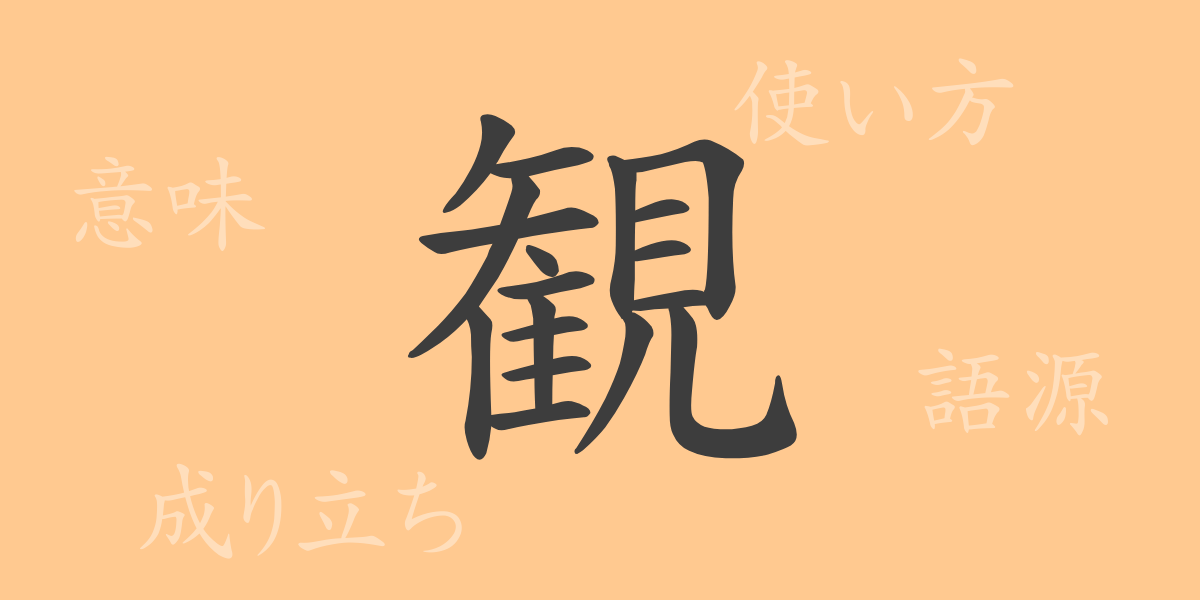The depth and beauty of the meaning held by a single Kanji character is a symbolic aspect of Japan’s linguistic culture. Among these, the Kanji ‘観’ (Kan) is a significant character that represents understanding and insight beyond what we see with our eyes. This article focuses on ‘観’ (Kan), exploring its origins, meanings, usage, and its role in the daily lives of the Japanese people.
The Origin (Etymology) of 観
The Kanji ‘観’ (Kan) has evolved from ancient Chinese pictographs. Originally, it depicted the scene of a bird looking over a distance, and over time it became abstracted to mean ‘to look’ or ‘to see.’ Furthermore, it has evolved to encompass a deeper meaning that goes beyond the act of seeing with the eyes, to perceiving with the heart and gaining insight.
Meaning and Usage of 観
‘観’ (Kan) includes meanings such as ‘to see,’ ‘to view,’ and ‘to observe,’ all of which imply a nuance of understanding beyond what is visible, introspection, or discerning the essence of things. In particular, when viewing artworks or natural scenery, the sense of experiencing with the heart and savoring deeply is emphasized.
Readings, Number of Strokes, and Radical of 観
The Kanji ‘観’ (Kan) contains various pieces of information.
- Readings: The on’yomi (Sino-Japanese reading) is ‘Kan’ , and the kun’yomi (native Japanese reading) is ‘Mi-ru’ .
- Number of strokes: 18 strokes
- Radical: 見 (Mi-ru)
Phrases, Idioms, and Proverbs Using 観 and Their Meanings
There are various phrases, idioms, and proverbs that include ‘観’ (Kan), such as:
- 観光 (Kankou): Enjoying the scenery and visiting famous places
- 観察 (Kansatu): Carefully watching the state and changes of things
- 観念 (Kannen): The idea or image one has about something
- 一石二鳥 (Issekinityou): Killing two birds with one stone, meaning to gain two benefits from a single action. This is related to the bird origin of ‘観’.
Summary on 観
The Kanji ‘観’ (Kan) is a powerful symbol that represents how we understand and perceive the world. It teaches us the importance of seeing not only with our eyes but also with the ‘eyes of the heart.’ It is used in a vast array of phrases and expressions in the Japanese language. Understanding the rich meanings held by this single character can help in appreciating the depth of Japanese culture and language.

























